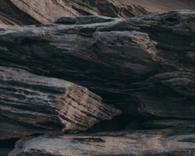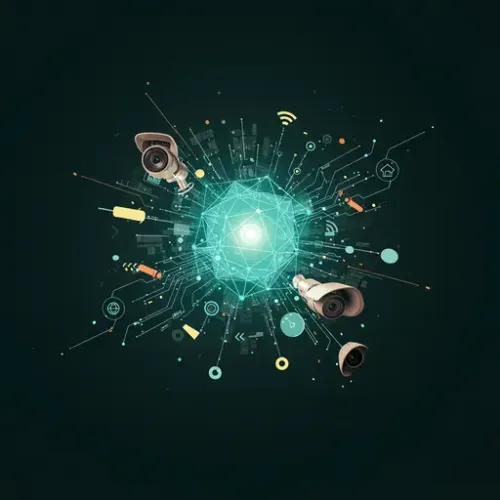Beyond Basic Streams: Mastering ONVIF PTZ Control & Event Integration in Home Assistant

NGC 224
DIY Smart Home Creator
Introduction: Elevating Your Smart Surveillance Beyond Static Feeds
For many Home Assistant users, integrating a security camera often stops at adding a basic RTSP or brand-specific stream to Lovelace. While useful for live viewing, this approach leaves a vast amount of potential untapped. What if your camera could not only show you what's happening but actively participate in your smart home's logic, automatically panning to a detected anomaly or triggering an announcement? This is where ONVIF (Open Network Video Interface Forum) comes into play. ONVIF is an industry standard that allows IP-based security products to communicate, offering a rich set of features including PTZ (Pan-Tilt-Zoom) control, motion event reporting, and even two-way audio, all directly integratable into Home Assistant.
This guide will take you beyond mere video feeds, delving into the practical, actionable steps to master ONVIF integration in Home Assistant. We'll cover everything from initial setup and network considerations to advanced PTZ automation, leveraging camera-generated events, and troubleshooting common pitfalls. Prepare to transform your passive surveillance cameras into dynamic, intelligent participants in your smart home ecosystem, enhancing security, responsiveness, and overall control.
Step-by-Step Setup: Integrating ONVIF Cameras into Home Assistant
1. Ensuring Network Readiness and ONVIF Camera Configuration
Before Home Assistant can work its magic, your ONVIF camera needs to be properly configured on your network. A stable foundation is critical for reliable communication.
- Static IP Address: Assign a static IP address to your camera within your router's DHCP reservation settings or directly on the camera's network configuration. This prevents IP changes that can break the Home Assistant integration.
- Enable ONVIF: Access your camera's web interface. Navigate to the network or services section and ensure ONVIF is enabled. Note down the ONVIF port (commonly 8000, 8080, or 80).
- Create a Dedicated ONVIF User: For security best practices, create a specific user account on your camera with strong, unique credentials solely for ONVIF access. Avoid using the default administrator account.
- Network Isolation (Recommended): Ideally, place all IoT and security devices, including your ONVIF cameras, on a separate VLAN. This isolates them from your main network, enhancing security by limiting potential attack surfaces. Ensure your Home Assistant instance can route to this VLAN.
Screenshot Placeholder: Example of an ONVIF camera's web interface showing ONVIF service enablement and port settings.
2. Integrating ONVIF into Home Assistant
Home Assistant includes a robust ONVIF integration that can auto-discover and configure most compliant cameras.
Using the UI (Recommended):
- Navigate to
Settings>Devices & Services. - Click
+ ADD INTEGRATIONand search for "ONVIF". - Home Assistant may auto-discover your camera. If not, click "Configure" and manually enter the camera's static IP address, ONVIF port (e.g.,
8000), and the ONVIF username/password you created earlier. - Click
Submit. If successful, Home Assistant will prompt you to assign the camera to an area.
Upon successful integration, Home Assistant will create several entities:
- A camera entity (e.g.,
camera.my_security_camera) for the live stream. - Service calls for PTZ control (e.g.,
onvif.ptz), two-way audio, and snapshotting. - If your camera supports it and has motion detection enabled, a binary sensor for motion (e.g.,
binary_sensor.my_security_camera_motion).
Manual YAML Configuration (Advanced Users / Troubleshooting):
While UI setup is preferred, you can also manually configure ONVIF in configuration.yaml if auto-discovery fails or for specific advanced scenarios. However, the UI integration often provides more features.
# Example of a basic manual ONVIF configuration (less common now)
# Note: UI integration is generally recommended for ONVIF
# camera:
# - platform: onvif
# host: 192.168.1.100
# port: 8000
# username: onvif_user
# password: your_strong_password
# name: Backyard ONVIF Camera
3. Basic PTZ Control via Services
With the camera integrated, you can start controlling its movement. ONVIF PTZ functionality is exposed through Home Assistant services.
Defining Presets on the Camera: The most reliable and repeatable way to control PTZ is by using presets. Access your camera's web interface and set up various view presets (e.g., "Front Gate", "Backyard Corner", "Driveway"). Note down the preset names or numbers, as these are what Home Assistant will use.
Calling PTZ Services in Home Assistant:
onvif.ptz: This is the primary service for PTZ control. It offers several modes:goto_preset: Moves the camera to a predefined position. This is the most commonly used for automations.absolute: Moves to an exact pan/tilt/zoom coordinate (requires precise values, less common for end-users).relative: Moves the camera by a certain amount from its current position.continuous: Continuously pans/tilts/zooms until a stop command is issued (useful for manual controls).stop: Stops any ongoing continuous PTZ movement.
Here's an example script to move your camera to a "Front Gate" preset:
# scripts.yaml
front_gate_view:
alias: Move Camera to Front Gate
sequence:
- service: onvif.ptz
target:
entity_id: camera.backyard_onvif_camera
data:
preset: 'Front Gate' # Use the exact preset name/token defined on your camera
pan: null # Required for 'goto_preset' but ignored, can be omitted
tilt: null
zoom: null
You can then trigger this script from a Lovelace button, another automation, or a voice command.
Screenshot Placeholder: A Lovelace card showing buttons configured to call `script.front_gate_view` and similar scripts for other presets.
Troubleshooting Section: Common ONVIF Integration Issues
Camera Not Discovered or Failing to Connect
- Network Connectivity: Ensure Home Assistant can reach your camera's IP. Use a network diagnostic tool (e.g.,
ping camera_ipfrom the HA terminal add-on or SSH). - ONVIF Service & Port: Double-check that ONVIF is enabled on the camera and you're using the correct port in the Home Assistant integration (often 8000, not 80 which is for the web UI).
- Credentials: Verify the ONVIF username and password are correct. Many cameras have separate credentials for ONVIF access vs. web UI access.
- Firewall: If you have a firewall on your Home Assistant host, camera, or network, ensure the ONVIF port is open for communication between HA and the camera.
- Firmware: Outdated camera firmware can sometimes cause ONVIF issues. Check for and install any available updates from your camera manufacturer.
- Compatibility: Not all cameras are 100% ONVIF compliant, even if they claim to be. Try using a third-party ONVIF Device Manager tool (for Windows) to test connectivity and available features outside of Home Assistant.
PTZ Controls Not Responding or Behaving Erratically
- PTZ Support: Confirm your specific camera model actually supports ONVIF PTZ. Some cameras are fixed-lens and only support basic ONVIF streaming/events.
- Preset Names: When using
goto_preset, ensure the preset name/token in your Home Assistant service call exactly matches what's configured on the camera (case-sensitive). - Home Assistant Logs: Enable debug logging for the ONVIF integration in
configuration.yamlto get more detailed insights into what's happening:logger: default: info logs: homeassistant.components.onvif: debug - Test with ONVIF Device Manager: If PTZ works with an external ONVIF tool but not Home Assistant, it points to an HA-specific configuration issue. If it doesn't work with the external tool either, the issue is likely with the camera's ONVIF implementation or hardware.
Motion Events Not Triggering Automations
- Camera Motion Detection: Verify that motion detection is enabled and properly configured *on the camera itself*. Home Assistant simply subscribes to events the camera sends; it doesn't perform motion detection internally via ONVIF.
- ONVIF Event Configuration: Some cameras require specific ONVIF event types (e.g., "Motion Alarm" or "VideoAnalytics/Motion") to be explicitly enabled to be sent. Check your camera's event settings.
- Binary Sensor State: Observe the state of your
binary_sensor.my_security_camera_motionentity in Home Assistant's Developer Tools. Does it change when motion is detected? If not, the events aren't reaching HA. - Automation Logic: Double-check your automation's trigger and conditions. Ensure you're triggering on the correct state change (e.g.,
from: 'off', to: 'on'for motion detection).
Advanced Configuration & Optimization: Unleashing Full Potential
1. Automating PTZ Patrols and Tours
Beyond simple preset recalls, you can create sophisticated PTZ tours that automatically sweep areas, enhancing proactive surveillance.
# scripts.yaml
security_patrol_tour:
alias: Daily Security Patrol Tour
sequence:
- service: onvif.ptz
target:
entity_id: camera.backyard_onvif_camera
data:
preset: 'Main Gate'
- delay: '00:00:15' # Wait 15 seconds at Main Gate
- service: onvif.ptz
target:
entity_id: camera.backyard_onvif_camera
data:
preset: 'Side Entry'
- delay: '00:00:20'
- service: onvif.ptz
target:
entity_id: camera.backyard_onvif_camera
data:
preset: 'Garage Door'
- delay: '00:00:10'
# Add more presets and delays as needed
- service: onvif.ptz # Return to a default 'home' position
target:
entity_id: camera.backyard_onvif_camera
data:
preset: 'Home Position'
Trigger this script with a time-based automation (e.g., every hour after sunset) or based on a specific event (e.g., "Away" mode activated).
2. Leveraging ONVIF Motion Events for Dynamic Automation
The ONVIF motion binary sensor is a game-changer for responsive automations. Instead of relying on image processing (like Frigate for advanced object detection), this uses the camera's internal detection.
# automations.yaml
- id: 'onvif_motion_floodlight_and_notification'
alias: 'Backyard Motion - Floodlight & Notify'
description: 'Turns on floodlight and sends notification on backyard motion during specific hours.'
trigger:
- platform: state
entity_id: binary_sensor.backyard_onvif_camera_motion
from: 'off'
to: 'on'
condition:
- condition: time
after: '19:00:00'
before: '06:00:00'
- condition: state
entity_id: light.backyard_floodlight # Ensure your floodlight entity is correct
state: 'off'
action:
- service: light.turn_on
target:
entity_id: light.backyard_floodlight
data:
brightness_pct: 100
- service: onvif.ptz
target:
entity_id: camera.backyard_onvif_camera
data:
preset: 'Alert Zone'
- service: notify.mobile_app_your_device
data:
title: 'Motion Detected in Backyard!'
message: 'There's activity in the backyard. Floodlight activated and camera moved to alert zone.'
data:
image: /api/camera_proxy/camera.backyard_onvif_camera # Include a snapshot
- delay: '00:05:00' # Keep light on for 5 minutes
- service: light.turn_off
target:
entity_id: light.backyard_floodlight
mode: single
3. Integrating Two-Way Audio (If Supported)
Some ONVIF cameras with built-in microphones and speakers allow two-way audio. Home Assistant exposes services like onvif.play_audio and onvif.start_two_way_audio. This can be useful for doorbell integrations, talking to pets, or deterring intruders. Note that audio streaming directly to/from Home Assistant's host can be complex and may require additional audio hardware/software configuration on the HA host itself.
Real-World Example: Advanced Perimeter Monitoring with ONVIF & Home Assistant
Let's consider a scenario where we want to enhance the security of a property with an ONVIF PTZ camera covering the perimeter, integrating with smart lighting and notifications.
Scenario: A single outdoor ONVIF PTZ camera (e.g., Reolink, Amcrest) monitors a large backyard with several vulnerable points (shed door, side gate, patio). We want automated responses during the night and a regular "security sweep" when away.
Automation 1: Nighttime Motion Response
# automations.yaml
- id: 'backyard_night_security_motion'
alias: 'Backyard Night Security - Motion Activated'
description: 'Activates floodlight, moves camera, and sends rich notification on night motion.'
trigger:
- platform: state
entity_id: binary_sensor.backyard_onvif_camera_motion
from: 'off'
to: 'on'
condition:
- condition: or
conditions:
- condition: sun
before: sunset
after: sunrise # This means during the night
- condition: time
after: '22:00:00'
before: '06:00:00'
action:
- service: script.turn_on # Call a script to turn on multiple lights if desired
target:
entity_id: script.activate_perimeter_lights
- service: onvif.ptz
target:
entity_id: camera.backyard_onvif_camera
data:
preset: 'Intruder View'
- service: notify.mobile_app_my_phone
data:
title: 'URGENT: Motion Detected!'
message: 'Unusual activity detected in the backyard. Lights on, camera moved. Review stream now!'
data:
tag: 'backyard_alert'
ttl: 0
priority: 'high'
image: /api/camera_proxy/camera.backyard_onvif_camera?width=800&height=450
actions:
- action: 'view_camera'
title: 'View Camera'
- action: 'silence_alert'
title: 'Silence (5 min)'
- delay: '00:00:10' # Give camera time to move and lights to activate
- service: camera.snapshot
data:
entity_id: camera.backyard_onvif_camera
filename: '/config/www/snapshots/backyard_motion_{{ now().strftime("%Y%m%d_%H%M%S") }}.jpg'
mode: single
- id: 'activate_perimeter_lights_script'
alias: 'Activate Perimeter Lights'
sequence:
- service: light.turn_on
target:
entity_id:
- light.backyard_floodlight_1
- light.backyard_spotlight_2
data:
brightness_pct: 100
rgb_color: [255, 255, 255]
Automation 2: Daily Perimeter Sweep When Away
- id: 'daily_away_security_sweep'
alias: 'Daily Away Mode Security Sweep'
description: 'Runs a PTZ patrol tour every day at noon if house is empty.'
trigger:
- platform: time
at: '12:00:00'
condition:
- condition: state
entity_id: person.me
state: 'not_home'
- condition: state
entity_id: person.spouse
state: 'not_home'
action:
- service: script.turn_on
target:
entity_id: script.security_patrol_tour # Calls the script defined earlier
mode: single
Best Practices & Wrap-up: Securing and Optimizing Your ONVIF Setup
Security Considerations
- Dedicated VLAN: As mentioned, isolating your cameras on a dedicated VLAN is paramount. This prevents them from accessing your sensitive devices and limits lateral movement for potential attackers.
- Strong, Unique Credentials: Use complex, unique usernames and passwords for your camera's ONVIF access and its web interface.
- Firmware Updates: Regularly check for and apply firmware updates from your camera manufacturer. These often contain critical security patches.
- Disable Unused Services: If your camera offers services like UPnP, FTP, or cloud connectivity you don't use, disable them to reduce your attack surface.
- Physical Security: Ensure cameras are physically secured and out of easy reach to prevent tampering.
Performance Optimization
- Event-Driven Automations: Prioritize automations based on ONVIF events (like motion) rather than constantly polling or processing video streams within Home Assistant, which can consume significant CPU resources.
- Stream Quality: If you only need snapshots or low-res feeds for notifications, configure your camera to provide a secondary, lower-resolution stream that Home Assistant can use, saving bandwidth and processing power.
- Home Assistant Hardware: For multiple high-resolution cameras, ensure your Home Assistant host has sufficient CPU and RAM. A Raspberry Pi might struggle with many simultaneous high-res streams.
Reliability & Scalability
- Static IP Addresses: Always assign static IPs to your ONVIF cameras to prevent communication disruptions.
- Monitor Camera Health: Create template sensors or use
binary_sensor.pingto monitor the online/offline status of your cameras, sending alerts if one goes offline. - Configuration Backups: Regularly back up your Home Assistant configuration (especially
configuration.yamlandscripts.yaml) to ensure quick recovery from any issues.
By integrating ONVIF cameras thoughtfully into Home Assistant, you move beyond simple live views. You gain a powerful, flexible, and dynamic surveillance system that actively contributes to your home's security and automation logic. Experiment with presets, motion events, and creative scripts to build a truly responsive and intelligent security setup tailored to your needs. The possibilities are vast, limited only by your imagination and your camera's ONVIF capabilities.

NGC 224
Author bio: DIY Smart Home Creator
